Cart
You have no items in your shopping cart
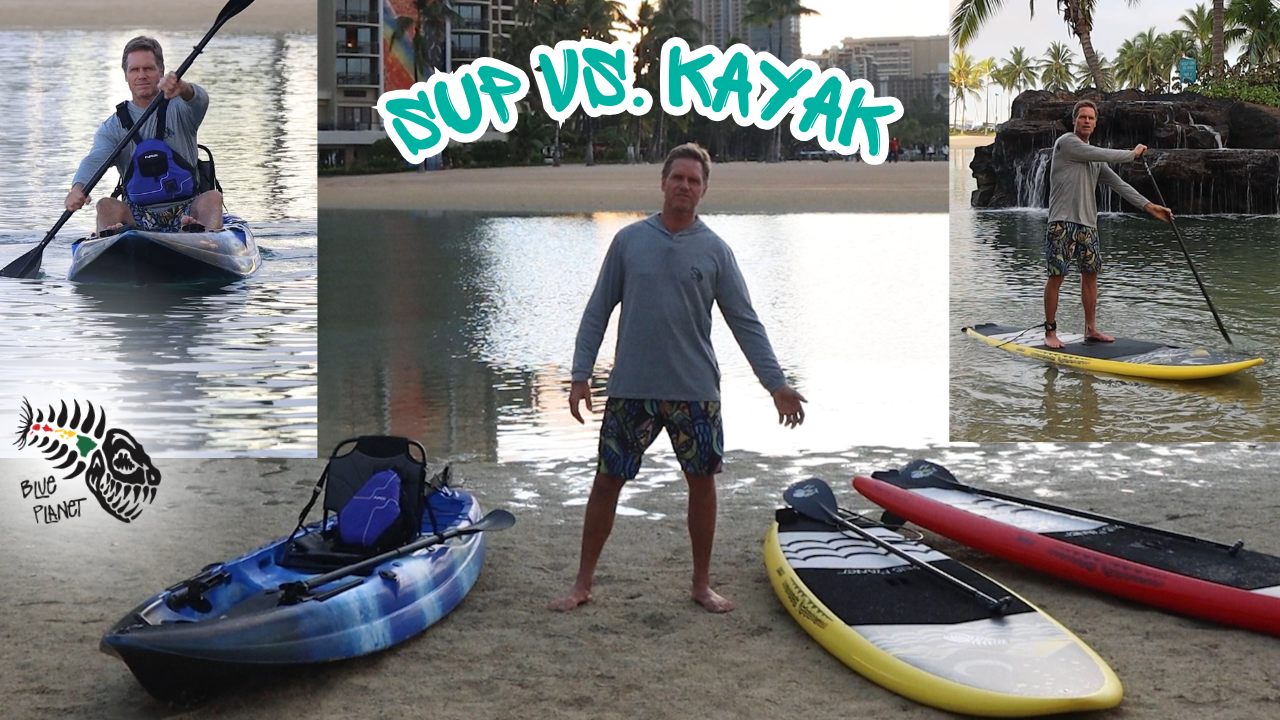
Today we're diving into the ultimate showdown: Paddleboard vs. Kayak. Which one reigns supreme for your water escapades? Let's find out!
In the realm of water sports and outdoor activities, few things rival the serene beauty and exhilarating experience of gliding across the water's surface. Whether you're seeking a peaceful paddle along a tranquil river or an adrenaline-fueled adventure through the waves, the choice between a paddleboard and a kayak can significantly impact your experience on the water. Both offer unique advantages and cater to different preferences and skill levels. So, let's dive into the debate: Paddleboard vs. Kayak – which is better for your water adventures?
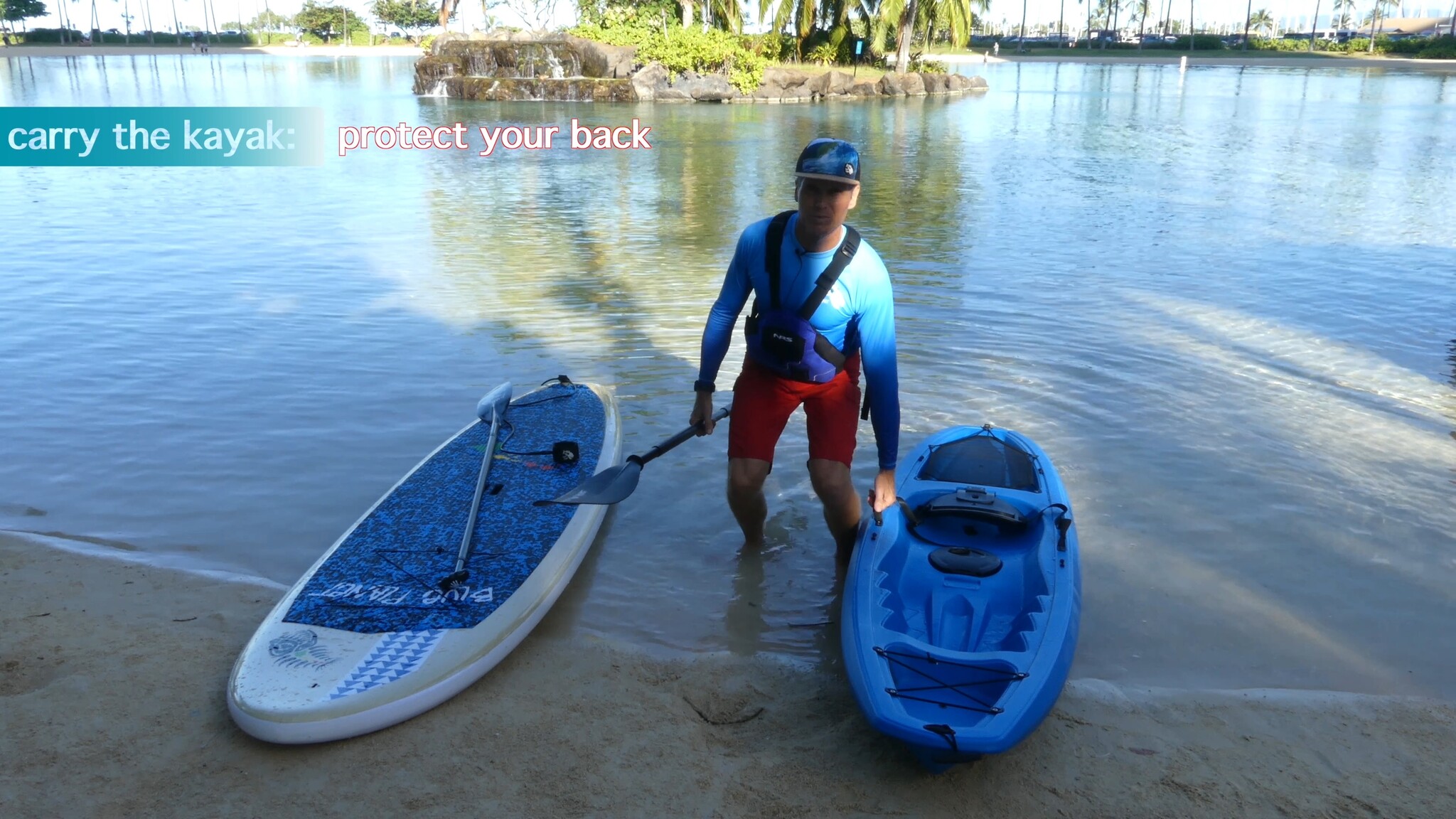
The Versatility of Paddleboarding
Paddleboarding has witnessed a surge in popularity in recent years, and for good reason. Its versatility appeals to a wide range of enthusiasts, from beginners to seasoned water athletes. One of the most appealing aspects of paddleboarding is its simplicity. All you need is a board, a paddle, and a body of water, making it very accessible to beginners.
One of the key advantages of paddleboarding is the sense of freedom and connection with nature it offers. Standing atop a paddleboard provides an unobstructed view of the surrounding landscape, allowing you to fully immerse yourself in the beauty of your surroundings. Whether you're gliding across a serene lake, exploring winding rivers, or riding the waves in the ocean, paddleboarding offers a unique perspective that can't be matched by other watercraft. The higher vantage point also allows you to look down into the water easier and with less glare than from a lower sitting position.

SUP provides a high vantage point
Additionally, paddleboarding provides an excellent full-body workout. Balancing on the board engages your core muscles, while paddling works your arms, shoulders, and back. It's a fantastic way to improve your balance, strength, and overall fitness while enjoying the great outdoors. Let's face it: most of us already spend too much time sitting down at work, while driving, traveling, watching TV or movies, etc., so it's good to be standing up while getting some exercise and enjoying the great outdoors.

SUP provides a full body workout
For those who crave adventure, paddleboarding also opens up opportunities for exploring hidden coves, navigating narrow waterways, and even practicing yoga on the water. Its versatility makes it well-suited for various activities, from leisurely paddles to adrenaline-pumping races and surfing.

Stand Up Paddleboards are very versatile- you can surf, cruise, explore, race, do SUP yoga, go down rivers, sunbathe, and more.
The Allure of Kayaking
On the other hand, kayaking offers its own set of advantages that appeal to a different audience. Kayaks typically sit lower in the water than paddleboards, providing a greater sense of stability and control, especially in rougher conditions. This stability makes kayaks an excellent choice for beginners or those who may be apprehensive about balancing on a paddleboard.
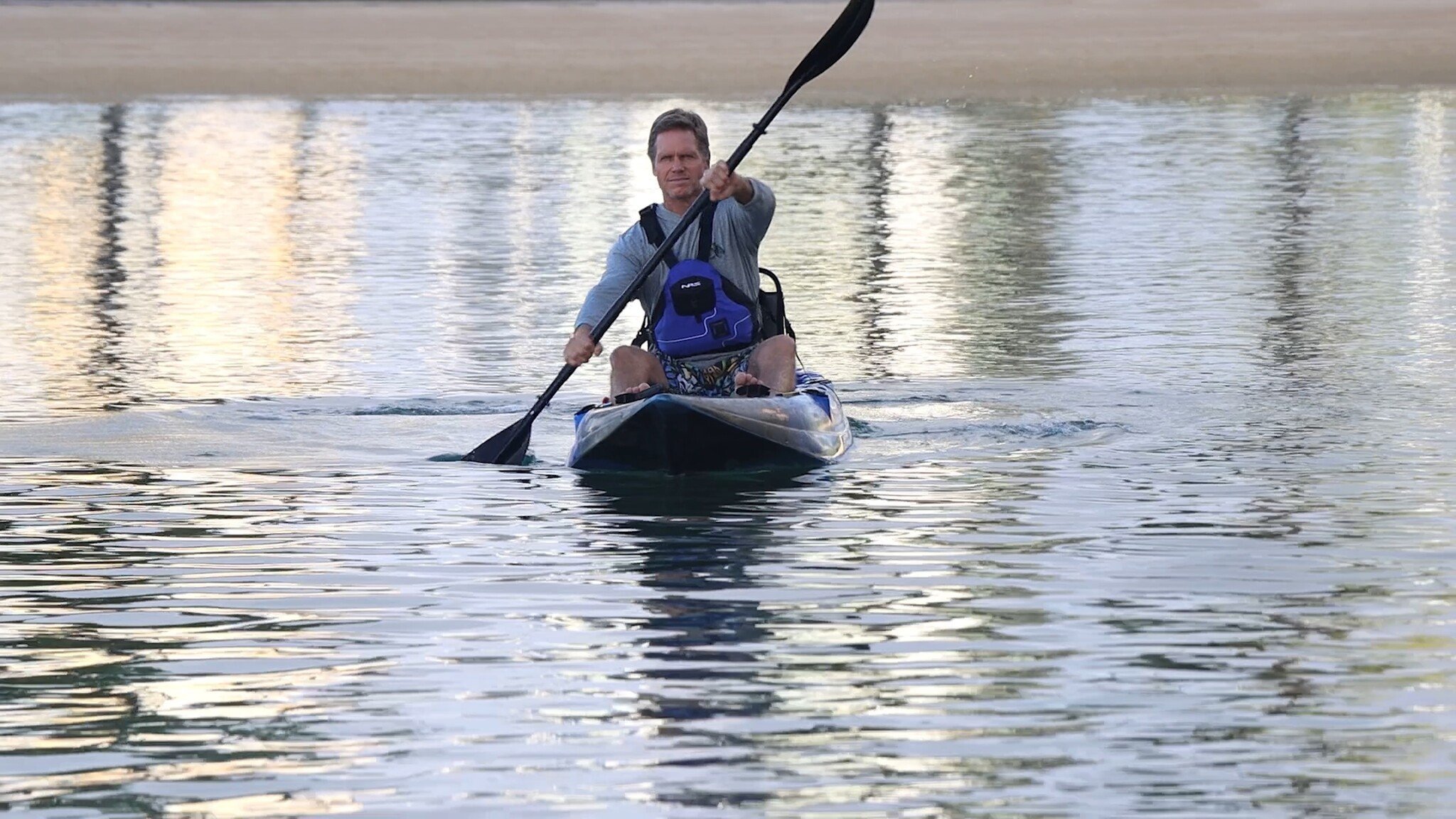
A stable Kayak makes balancing easy
One of the biggest draws of kayaking is its ability to cover long distances efficiently. The seated position and dual-blade paddle allow kayakers to paddle with ease for extended periods, making it ideal for exploring vast expanses of water such as lakes, bays, and coastal regions. The two sided paddle also makes it easier to go straight and brace on either side for stability as compared to a single blade paddle that has to be switched from side to side. Whether you're embarking on a multi-day kayak camping trip or simply enjoying a leisurely paddle along the shoreline, kayaking offers a sense of tranquility and freedom that is hard to beat.

A two sided paddle makes it easier to paddle straight and brace on both sides
Moreover, kayaks often come equipped with storage compartments, allowing you to bring along supplies, gear, and even overnight camping equipment. This makes kayaks well-suited for adventure seekers who wish to embark on extended expeditions or explore remote areas inaccessible by other means.
Another advantage of kayaking is its suitability for various water conditions. While paddleboarding may be challenging in windy or choppy conditions, kayaks are designed to handle rougher waters with ease, thanks to their streamlined hulls and closed cockpit designs. This makes kayaking a more practical choice for those who frequent coastal areas or enjoy exploring in less predictable conditions. The sitting position also has less wind resistance and makes paddling into the wind easier than in a standing position.
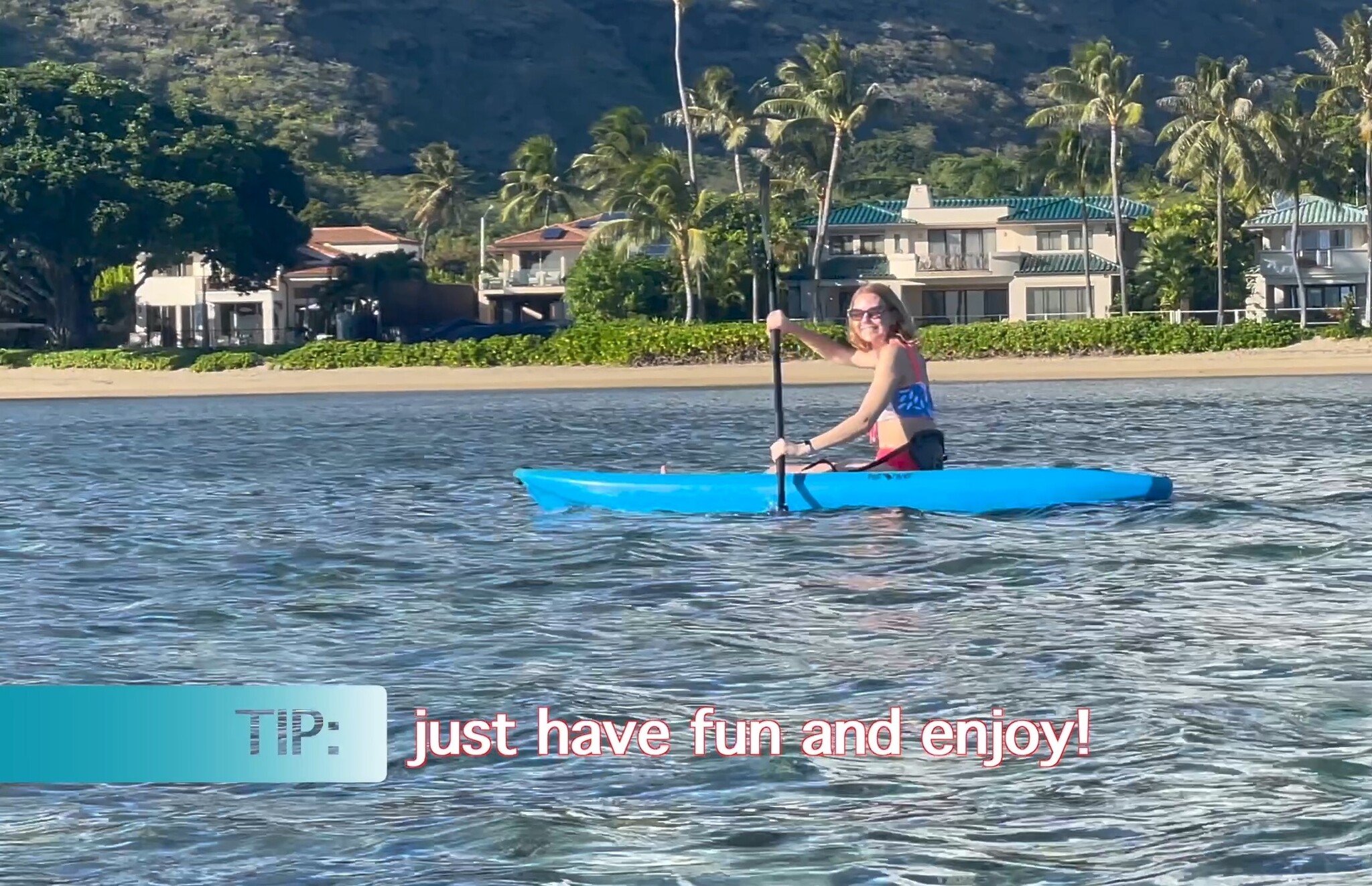
kayaking has less wind resistance
Paddling together is fun on a tandem (two person) kayak made for two paddlers propelling the kayak in tandem. While it's possible to paddle together on a SUP, they are usually made for one person and it's more difficult for both passengers to paddle together.
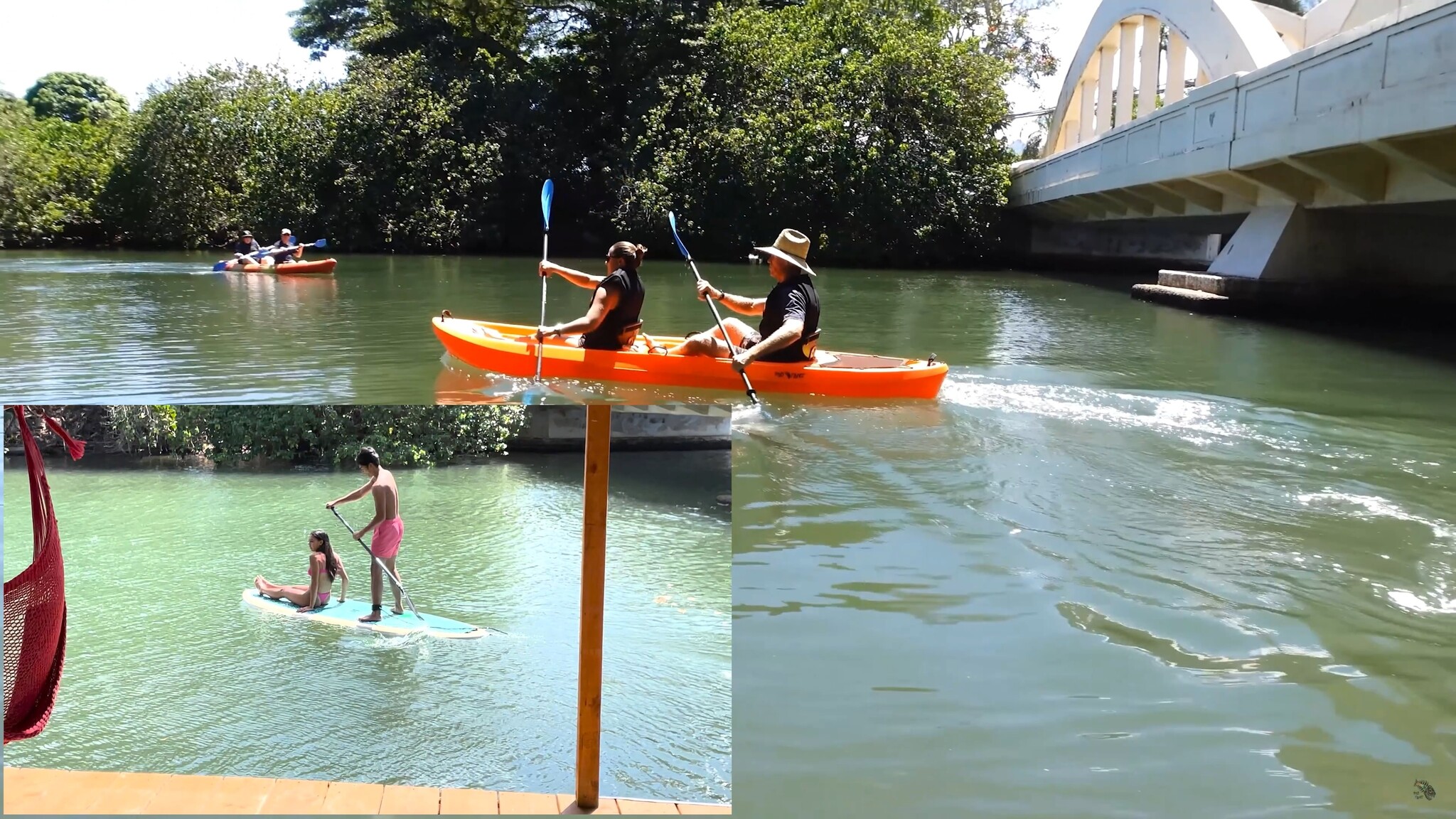
paddling together is easier on a tandem kayak
Choosing the Right Craft for You
Ultimately, the choice between paddleboarding and kayaking comes down to personal preference, skill level, and the type of experience you seek on the water. If you value simplicity, versatility, a higher vantage point, a full body workout, and a closer connection with nature, paddleboarding may be the perfect choice for you. On the other hand, if you prefer stability, efficiency, and the ability to cover long distances comfortably, kayaking may better suit your needs.
Consider your goals and preferences when making your decision. If you're new to paddling and prefer a more leisurely pace, start with kayaking to ease into the experience. As you gain confidence and skills, you can always explore the world of Stand Up Paddleboarding and discover new adventures on the water.
In conclusion, both paddleboarding and kayaking offer unique benefits and experiences that appeal to a wide range of enthusiasts. Whether you're seeking relaxation, adventure, or a full-body workout, there's no shortage of opportunities to explore the wonders of the great outdoors from the vantage point of the water. So, grab your paddle or oar, head to your favorite body of water, and embark on your next aquatic adventure – whether on a paddleboard or in a kayak, the choice is yours to make.
See you on the Water!
Aloha, Robert Stehlik
Here are some additional videos in playlists you may enjoy:
Introduction to SUP- tips for beginner Stand Up Paddlers Playlist:
How to Kayak Playlist:
Comments
Be the first to comment...